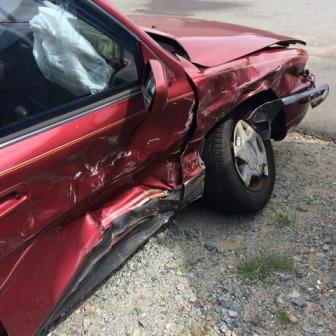Whose insurance applies in a car crash?

Car insurance is a tricky subject for a lot of people, something that can be even more complicated if you’re involved in a car accident and are attempting to find out whose insurance applies. This article will discuss when your car is in a crash with another vehicle. Whose insurance pays? It addresses the easy answers, like when you are driving your car, but also if you let someone else drive it, if it’s stolen or you are in a rental car. Different rules apply in each of these circumstances.
When there is a car crash, the first place we look is to the responsible party. The person who caused the accident is responsible for the damages, both to your car and your person. Then, we must examine the order in which insurance applies. The first rule of insurance coverage starts with the vehicle. The insurance which covers the at fault vehicle provides primary coverage. If the at fault party is working (say you get hit by a FedEx truck), the company and/or their insurance is responsible.
Let’s say you are in the unfortunate position of being hit by an at fault driver who has no insurance on the car. The next place we have to look is to the driver. If there is no insurance on the vehicle, the driver’s insurance kicks in. Of course, the owner is usually the driver, but not always. If the driver is different from the owner and the driver has his or her own insurance, that would be the next place recovery.
If neither the at fault owner nor the driver have insurance, the next place we look is to your insurance. This is called uninsured motorist coverage. On your insurance premium, there is a separate charge for this coverage in the unfortunate event you are struck by an uninsured motorist. Your insurance company steps into the shoes of the at fault owner. There are misconceptions that making any claim against your insurance will increase your rates. This is not true. Your rates will go up if you are in an accident which was your fault, but in an uninsured motorist claim, you are not at fault. One final note, if you have liability only on your car, your insurance company will not pay to fix the damage from an uninsured motorist. You’ll be out of luck.
Let’s switch the tables and assume the accident was your fault. If you were driving your car and you are in an accident, that’s easy, your insurance applies. If you give permission to someone else to drive your car and they cause an accident, your insurance applies. As above, insurance follows the vehicle. However, an insurance company can deny coverage for an accident if you let an excluded driver or a driver with a suspended license drive your car. Also, you must disclose all licensed drivers in your house when you apply, or they may also deny coverage.
If your car is stolen, your insurance does not have to pay for damages caused by the thief. It will pay for the damage to your car, but only if you have full coverage. If you have liability only and your car is stolen, you will not get anything from your insurance. You need to weigh the risks when deciding to purchase liability only.
Finally, your car insurance follows you. So, if you are driving someone else’s car and they do not have insurance, your car insurance will cover you. Your insurance is considered secondary if the car you are driving has insurance, but at least you are covered. Likewise, as long as you have your own car insurance, it covers you while you are in a rental car. There’s no need to purchase that additional insurance. One final caveat, check your insurance before renting overseas.

